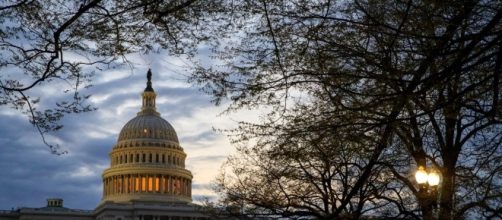Congress has devised a Continuing Resolution that will keep the government funded through the rest of the fiscal year. The legislative branch was more generous to NASA than either the previous Obama administration and the current Trump administration proposed to be, according to Space News. But the NASA part of the bill was also, with some exceptions, pretty much status quo, mainly due to a lack of guidance from the executive branch.
For example, the NASA part of the CR funds the Europa Lander, the Asteroid Redirect Mission, and the space agency’s education office, each not financed in the Trump administration’s 2018 budget request.
The CR was very generous to the space exploration and planetary science accounts. It did slice the Earth science account, but not as much as some people feared. It includes funding for the Pre-Aerosol, Clouds, and Ocean Ecosystem, or PACE satellite that the Trump administration wants to cancel.
The bill also contains funding for a “helicopter demonstrator” to fly on the Mars 2020 rover mission, but only if it does not delay the launch. The development of craft that can fly through the Martian atmosphere would extend the reach of subsequent Mars expeditions.
The overall bill will fund NASA at about 19.6 billion for the current fiscal year, $600 million above the Obama request and $300 million above the previous fiscal year.
Two facts jump out because of what was in the NASA portion of the CR.
First, Trump needs to roll out his space policy sooner rather than later. Only with that kind of guidance will Congress be able to make the changes to NASA that are required both through the authorization and appropriations process. Work on the appropriations bill that includes NASA will doubtless begin in earnest sometime this summer.
Second, even though broad agreement exists on a bi-partisan basis and both sides of Pennsylvania Avenue that something needs to be done to jump-start space exploration at NASA, the details will still have to be worked out. President Trump will have to realize that what he eventually proposes will not exactly resemble what finally comes out of Congress.
Trump should be comfortable with this fact. It is the art of the deal after all.
Any disagreements and tensions over priorities will be lessened if the Trump people consult with congressional space leaders before rolling out a new space policy. The more that has been agreed to beforehand, the less that has to be argued over after the fact. Then the White House, NASA, and Congress can approach reforming space policy as a united front.

